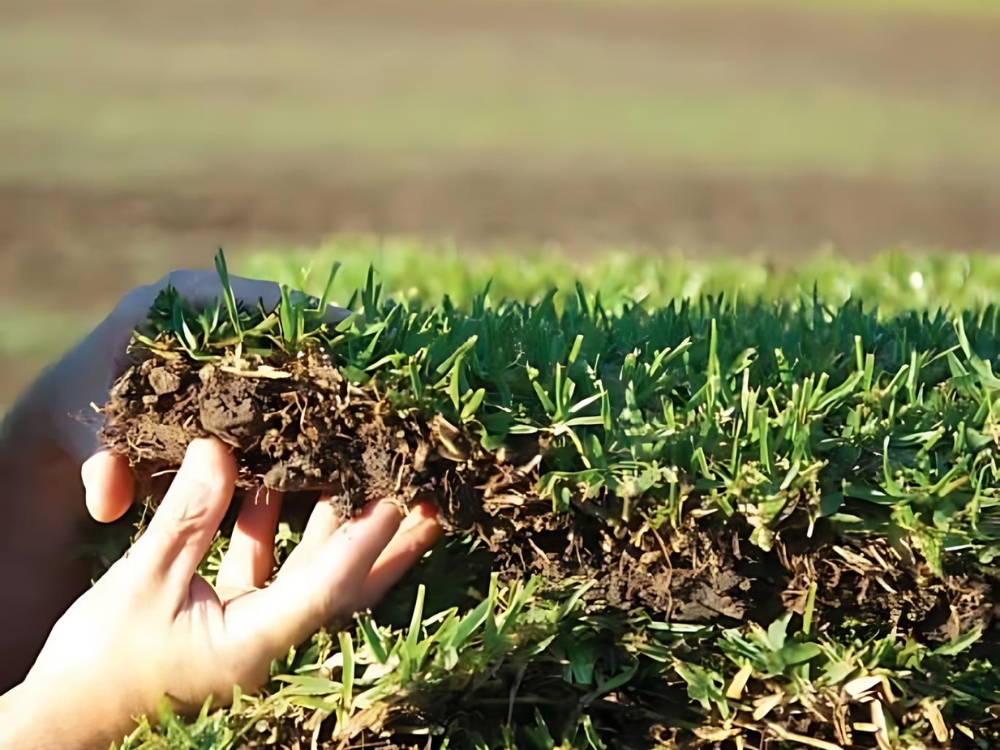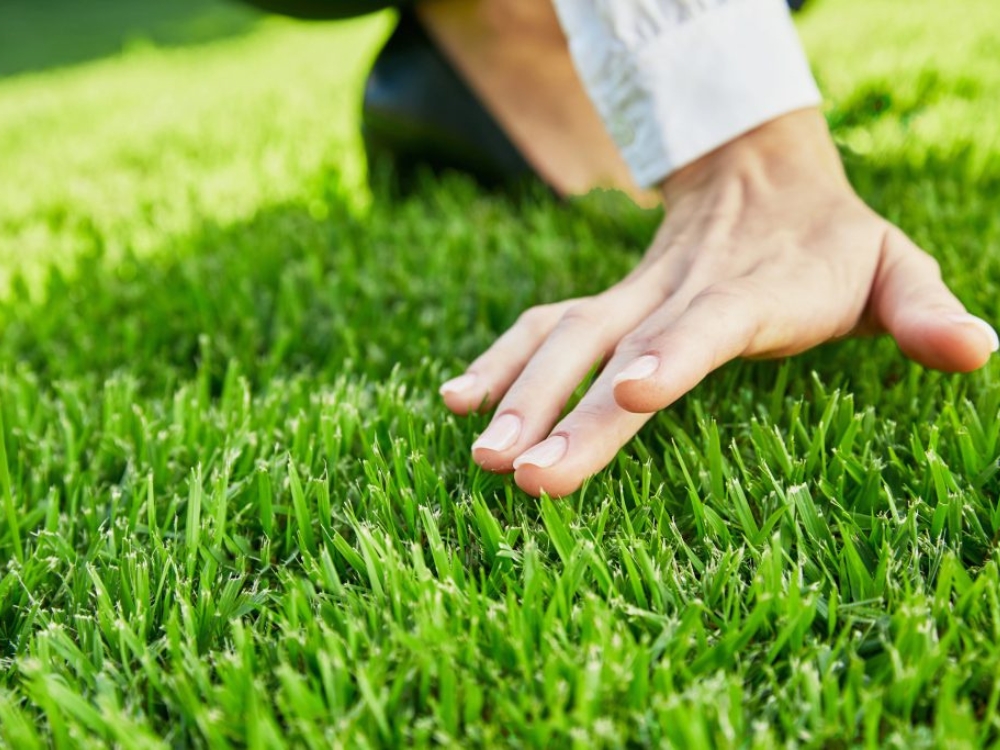How To Thicken Your Lawn For A Lush Green Yard
Quick Links
How to Thicken Your Lawn for a Lush Green Aussie Yard
A thick lawn not only looks appealing but also helps in crowding out weeds, improving soil health, and providing a comfortable area for outdoor activities.
However, maintaining a lush, thick lawn can be challenging, especially with the unique climate conditions we have here in Australia.
With the right lawn care maintenance, you can achieve a lush, dense lawn that enhances the beauty of your yard and home.
The first step is to uncover why your grass is thinning, before fixing the issue and then, finally, you can maintain good lawn care practices to maintain dense lawn growth.
Common Reasons for a Thin, Sparse Looking Lawn
Even with the best intentions, lawns can sometimes become thin and patchy.
Understanding the common causes of these issues can help you address them more effectively and restore your lawn to its full potential.
Here are some of the most common reasons lawns thin and what you can do to prevent these issues from impacting your lawn again.

1. Poor Soil Quality
Soil quality is fundamental to lawn health. Compacted soil, poor drainage, and low nutrient levels can all lead to thin grass.
Conducting a soil test can identify nutrient deficiencies or pH imbalances that need correction.
2. Inadequate Watering
Both overwatering and underwatering can stress grass, leading to sparse growth.
Overwatering can cause shallow roots and disease, while underwatering can lead to dry, brittle grass. Finding the right balance is crucial.
3. Improper Mowing Practices
Mowing too short or infrequently can weaken grass, making it more susceptible to disease and pests.
Always follow recommended mowing heights for your specific grass type and maintain a regular mowing schedule.
4. Lack of Sunlight
Grass needs adequate sunlight to thrive. Shaded areas can struggle to grow thick, healthy grass.
Consider shade-tolerant grass varieties for these areas or thin out tree canopies to allow more light through.
5. Pest Infestations
Insects such as grubs, chinch bugs, and armyworms can damage grass roots and blades, leading to thinning lawns.
Regular inspection and prompt treatment with appropriate pest control measures can prevent significant damage.
6. Weed Competition
Weeds compete with grass for nutrients, water, and sunlight. A heavy weed infestation can choke out grass, resulting in a thin lawn.
Use pre-emergent herbicides and post-emergent herbicides as needed and maintain healthy lawn practices to reduce weed growth.
7. Disease
Lawn diseases such as fungal infections can cause patches of dead or dying grass. Conditions like brown patch, dollar spot, and powdery mildew are common culprits.
Proper watering, fertilisation, and fungicide treatments can help manage these diseases.
8. Insufficient Fertilisation
Under-fertilising your lawn can lead to nutrient deficiencies, while over-fertilising can burn the grass and harm the soil.
Use a balanced, slow-release fertiliser appropriate for your grass type and follow recommended application rates.
9. Heavy Foot Traffic
Areas with heavy foot traffic can become compacted, making it difficult for grass to grow.
Designate walkways and recreational areas to reduce wear on your lawn. Aerate compacted areas to improve soil structure.
10. Environmental Stress
Extreme weather conditions, such as drought, high heat, or excessive rain, can stress your lawn.
During such times, adjust your lawn care practices to help your grass cope with environmental stresses.

How to Thicken Lawn
Now that you’ve identified what is causing your lawn to thin, it’s time to turn your attention to thickening the growth habit of your lawn. Transforming a thin lawn into a lush, healthier lawn does require some TLC.
By following the below steps—testing the soil, aerating, controlling weeds and pests, fertilising, and dethatching—you can significantly improve the health and thickness of your lawn.
Each step addresses a specific aspect of lawn care, contributing to a comprehensive approach that results in a lush, green, and resilient lawn.
After you’ve got a thicker lawn, regular maintenance and attention will ensure that your lawn remains thick and vibrant throughout the growing season.
Step 1: Test Your Soil
Understanding your soil’s pH and nutrient content will help to guide your next steps.
Using a pH testing kit, you’ll get a better understanding of the changes your soil needs to become the ideal pH for deep root growth.
Step 2: Aerate The Soil
Aeration helps alleviate soil compaction, promoting better air, water, and nutrient penetration to the grass roots.
Ideally, lawns should be aerated during the growing season in Spring to avoid causing too much stress for your lawn.
You can either hire a core aerator to remove small plugs of soil or use a garden fork or aerating sandals to create space in the soil for roots to expand.
Step 3: Control Weeds, Pests, and Treat Diseases
Managing weeds, pests, and lawn diseases is crucial for healthy grass growth. Look for signs of weeds, insect damage, or disease symptoms like discoloration or bare patches.
Once you know if there is a problem, use selective herbicides to control weeds, appropriate pesticides for pests, and fungicides for diseases.
Treating these, even if they’re a small issue, will help your lawn to grow unhindered.
Step 4: Fertilise Your Lawn
Proper fertilisation provides essential nutrients that promotes thick green grass and vigorous root growth.
Based on your soil test results, select a balanced, slow-release fertiliser suitable for your grass type.
Apply the fertiliser evenly across your lawn, following the manufacturer’s instructions to avoid over-fertilising. Always make sure to thoroughly water in the fertiliser to avoid it burning your lawn.
Step 5: Dethatch Your Lawn
Thatch is a layer of organic material that can build up on the soil surface, impeding water and nutrient absorption.
Depending on the size of your lawn and how bad the thatch build-up is, you may decide to use a dethatching rake, mow or use a specialised dethatching machine.
Finally, remove the debris from dethatching to prevent it from smothering your grass.

Good Lawn Care Practices for a Thick Lawn
Maintaining a thick, healthy lawn is an ongoing process. However, now that you’ve made the effort to boost your lawn’s growth, it’ll be much easier to maintain your lawn and keep it lush and vibrant throughout the year.
Regular Mowing
Proper mowing practices are essential for promoting thick grass growth.
Regular mowing encourages lateral growth and helps your grass spread. Aim to mow your lawn once a week during peak growing season.
Always remember the golden rule of mowing – avoid cutting more than one-third of the grass blade at a time.
Adequate Watering
Consistent and deep watering is crucial for a thick lawn. Water your lawn deeply and infrequently to encourage deep root growth and drought tolerance.
Make sure to keep an eye on the weather as you may not need to water during wet seasons, or you may need more frequent watering during dry seasons.
The best time to water is early in the morning to reduce evaporation and fungal growth.
Seasonal Fertilisation
Fertilising your lawn provides essential nutrients that support growth and resilience. Fertilise your lawn seasonally to help it prepare for growth periods as well as the cooler seasons.
A balanced, slow-release fertiliser provides ongoing necessary nutrients for your lawn. However, a quick-acting liquid fertiliser may be needed if your lawn is lacking particular nutrients.

Thicker Lawn FAQs
How Can I Make My Grass Look Thicker?
Follow a combination of proper mowing, watering and fertilising practices to promote thick grass growth.
How To Make My Grass Green?
Ensure your lawn receives adequate water, nutrients, and sunlight. Regular mowing and avoiding soil compaction also contribute to a greener, thicker lawn.
What Fertiliser to Use to Thicken Grass?
Use a balanced, slow-release fertiliser suitable for your specific grass type. Conduct a soil test to identify any nutrient deficiencies.
How Do You Fix A Thick Spongy Lawn?
Aerate your lawn to reduce compaction and improve drainage. Avoid overwatering and excessive fertilisation.
Does Cutting Grass Short Make It Thicker?
No, cutting grass too short can stress the plants and lead to thinning. Maintain an appropriate mowing height for your grass type.
How To Make Buffalo Grass Thicker?
Buffalo grass benefits from regular mowing, deep watering, and fertilisation. Avoid scalping and ensure good sunlight exposure.
How Long Does Grass Take To Thicken?
With proper care, you can see noticeable thickening in a few weeks to a couple of months, depending on grass type and growing conditions.
Achieving a thick, lush lawn in Australia’s warm climate is possible with the right grass type and maintenance practices.
Regular mowing, proper watering, fertilisation, and aeration are key steps in promoting a dense lawn. By following these guidelines, you can enjoy a beautiful, thick lawn year-round.
Remember, consistency and proper techniques are the secrets to a thriving lawn.
read more!
recent posts
Poolside Turf: Choosing and Maintaining Grass Around Pools
There’s nothing quite like stepping out of a swimming pool onto soft, lush grass. But when it comes to finding the best grass for around a pool, not all lawns are created equal. Chlorine pools, heavy foot traffic, and the unforgiving Australian sun can take a toll on...
Keeping Your Lawn Green and Healthy During the Summer Heat
Discover the best grass options for your lawn with our complete guide. Make informed choices for a lush, healthy yard. Read more to find your ideal grass!
Summer Lawn Weeds: Prevention and Management
Discover the best grass options for your lawn with our complete guide. Make informed choices for a lush, healthy yard. Read more to find your ideal grass!

Our Turf
TifTuf Bermuda
Buy Turf Online © 2019 All Rights Reserved. | Proudly Designed and Developed by Sydney ICT



